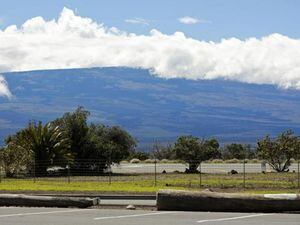Hawaii’s Mauna Loa volcano starts to erupt
The eruption began late on Sunday night in the summit caldera of the volcano on the Big Island.

Hawaii’s Mauna Loa, the world’s largest active volcano, has started to erupt, prompting volcanic ash and debris to fall nearby.
The eruption began late on Sunday night in the summit caldera of the volcano on the Big Island, the US Geological Survey said.
Early on Monday, it said lava flows were contained within the summit area and were not threatening nearby communities.
Officials at the Hawaiian Volcano Observatory said: “Lava flows in the summit region are visible from Kona. There is currently no indication of any migration of the eruption into a rift zone.”
A rift zone is where the mountain is splitting apart, with the rock cracked and relatively weak, making it is easier for magma to emerge.
The agency warned residents at risk from Mauna Loa lava flows should review their eruption preparations.
Scientists had been on alert because of a recent spike in earthquakes at the summit of the volcano, which last erupted in 1984.
Mauna Loa, rising 13,679 feet (4,169 metres) above sea level, is the much larger neighbour to Kilauea volcano, which erupted in a residential neighbourhood and destroyed 700 homes in 2018.
Some of its slopes are much steeper than Kilauea’s so when it erupts, its lava can flow much faster.
During a 1950 eruption, the mountain’s lava travelled 15 miles (24 kilometres) to the ocean in less than three hours.





